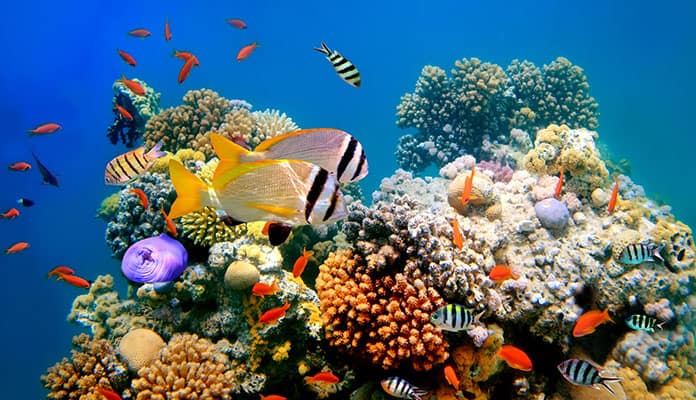
Whether you are a snorkeler or a scuba diver, you will see an abundance of colors and impressive corals below the water’s surface. Being able to identify all the marine life you encounter will give you a greater appreciation of all your experience underwater. With so many different types of coral out there we have decided to make a list of the most common types of hard corals in our waters.
Lots of people mistakenly think of coral as simple rocks or even plants. Corals actually consist of small marine invertebrate called Coral Polyps and the exoskeleton that is their home.
There are many different types of coral underwater. All of the coral can be divided into two main types: Hard Coral and Soft Coral. For this post, we are going to talk about hard coral.
To read all about soft coral, click here.
What Is Hard Coral?
The term hard coral refers to a type of reef that is made from limestone (calcium carbonate). In simpler terms, hard coral will look like rocks on the outside but have a soft inside. As they complete their life cycle the next generation grows and pushes them further out. Because it takes so long for this to happen hard coral grows very slowly. This is why it should be such a high priority to protect and care for these reefs.
You might also like: How To Survive A Surfing Wipeout
Types Of Hard Coral
1. Staghorn Coral
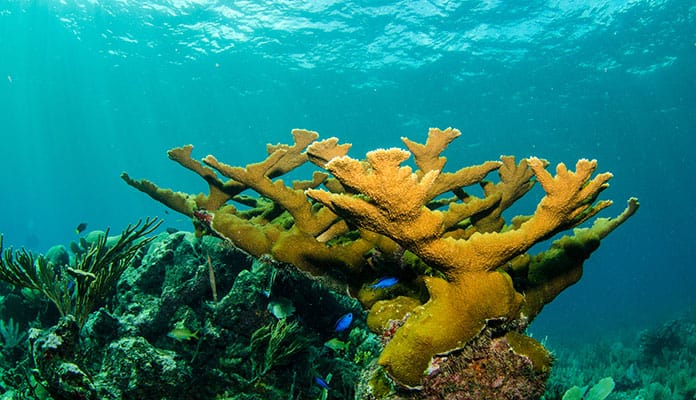 This type of coral looks like little arms reaching out of the reef. They have branches that extend out of the hard coral base. They can grow as big as 7 feet (2 meters) tall and grow around 5-8 inches (12-20 centimeters) a year. You will most likely see Staghorn Coral (Acropora cervicornis) in the Caribbean and provides a great home to many types of fish.
This type of coral looks like little arms reaching out of the reef. They have branches that extend out of the hard coral base. They can grow as big as 7 feet (2 meters) tall and grow around 5-8 inches (12-20 centimeters) a year. You will most likely see Staghorn Coral (Acropora cervicornis) in the Caribbean and provides a great home to many types of fish.
2. Pillar Coral
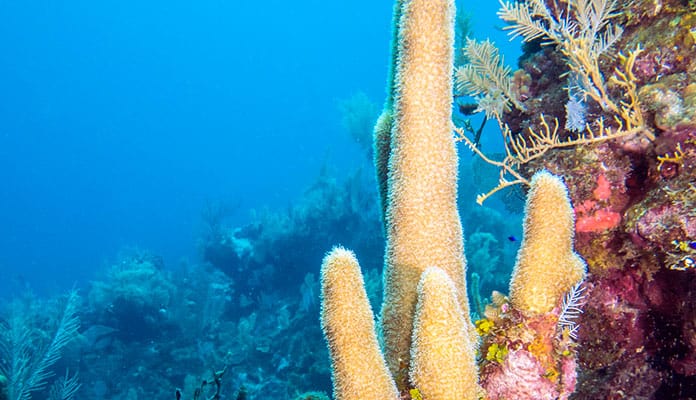 Unlike Staghorn Coral, this doesn’t have any arms branching out of the main stacks. It grows straight up from the seabed to a height of around 9 feet tall (3 meters) tall. You will see Pillar Coral in waters up to 65 feet deep (20 meters) and even on ground that is not flat. Another name for Pillar Coral is Dendrogyra cylindricus.
Unlike Staghorn Coral, this doesn’t have any arms branching out of the main stacks. It grows straight up from the seabed to a height of around 9 feet tall (3 meters) tall. You will see Pillar Coral in waters up to 65 feet deep (20 meters) and even on ground that is not flat. Another name for Pillar Coral is Dendrogyra cylindricus.
3. Table Coral
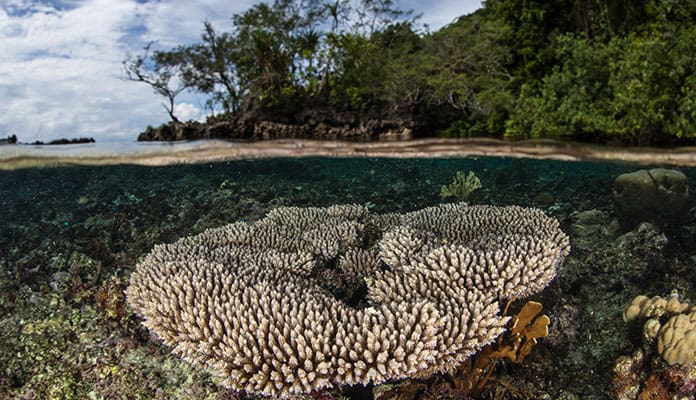 Most coral is appropriately named, meaning they look like their name implies. Table Coral is no different. Instead of having branches, it forms a flat surface much like a round kitchen table. This allows them to absorb as much sunlight as it can get. The scientific name is Acropora.
Most coral is appropriately named, meaning they look like their name implies. Table Coral is no different. Instead of having branches, it forms a flat surface much like a round kitchen table. This allows them to absorb as much sunlight as it can get. The scientific name is Acropora.
4. Brain Coral
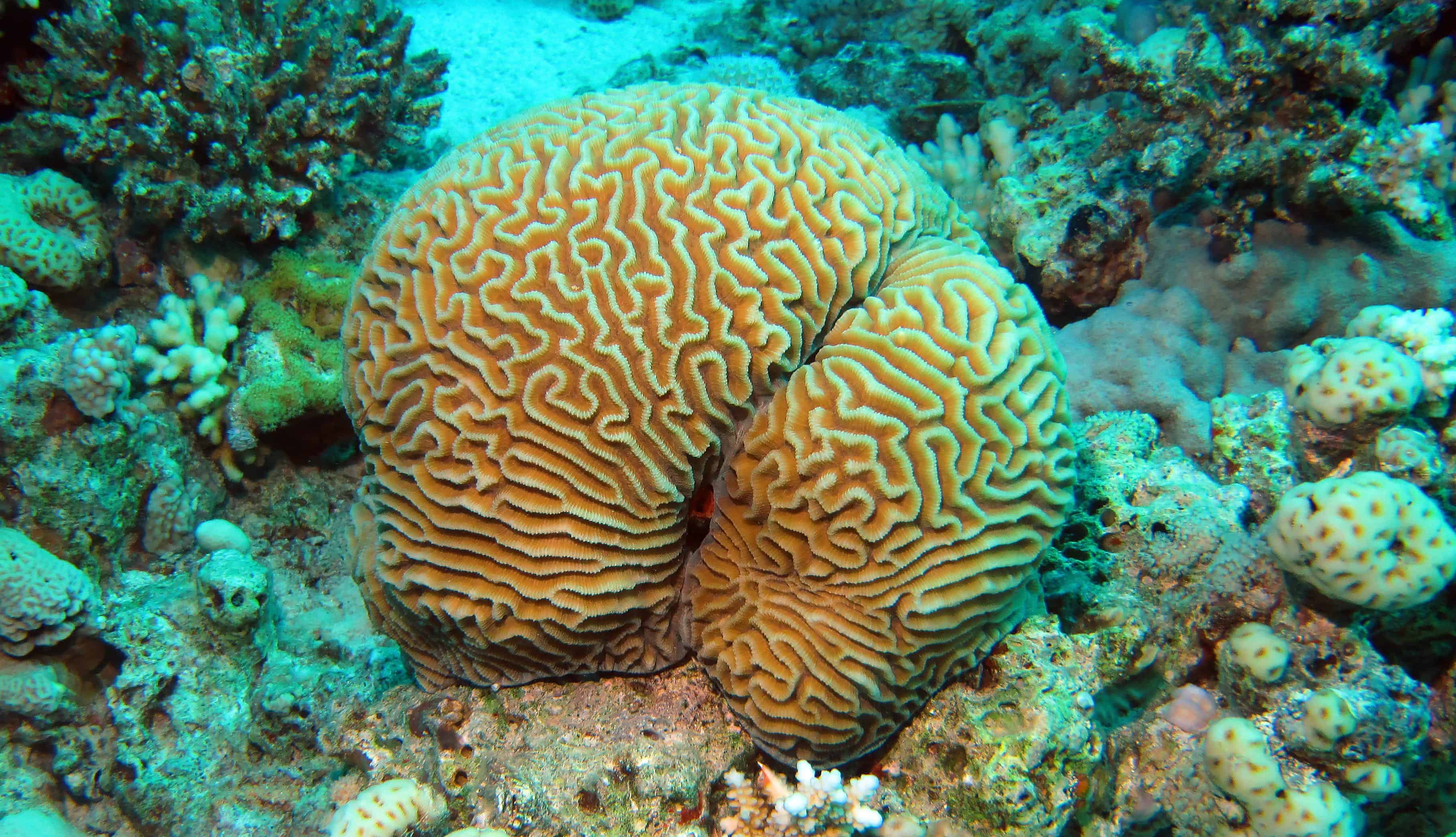 From the Faviddae family, Brain Coral is aptly named for its striking resemblance to a brain. These spherical corals have a grooved surface the looks squishy and soft. These corals can grow an impressive 6 feet making them significant underwater structures. With an estimated lifespan of a shocking 900 years, this delicate coral is incredibly impressive.
From the Faviddae family, Brain Coral is aptly named for its striking resemblance to a brain. These spherical corals have a grooved surface the looks squishy and soft. These corals can grow an impressive 6 feet making them significant underwater structures. With an estimated lifespan of a shocking 900 years, this delicate coral is incredibly impressive.
5. Blue Coral
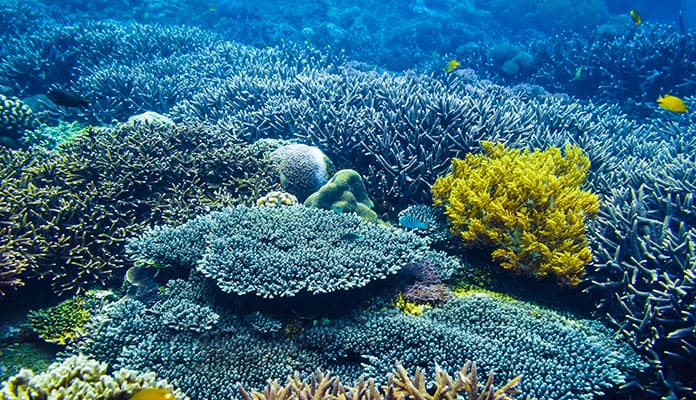 Blue Coral is one of the most vibrant hard coral around. It forms a circular design that is hard to miss when snorkeling or scuba diving. This type of coral is predominantly found in warmer waters on flat or even sloped ground. Blue Coral is also known as Heliopora coerulea.
Blue Coral is one of the most vibrant hard coral around. It forms a circular design that is hard to miss when snorkeling or scuba diving. This type of coral is predominantly found in warmer waters on flat or even sloped ground. Blue Coral is also known as Heliopora coerulea.
6. Great Star Coral
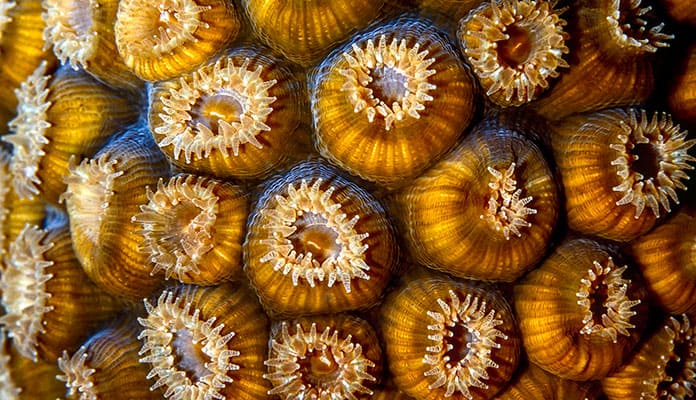 Referred to as Monstraea Cavernosa the great star coral is one of the most beautifully intricate of the hard coral. This coral is usually found in warmer water like that of the Caribbean. It can have Polyps that can grow to the size of human fingers which come alive at night.
Referred to as Monstraea Cavernosa the great star coral is one of the most beautifully intricate of the hard coral. This coral is usually found in warmer water like that of the Caribbean. It can have Polyps that can grow to the size of human fingers which come alive at night.
7. Tube Coral
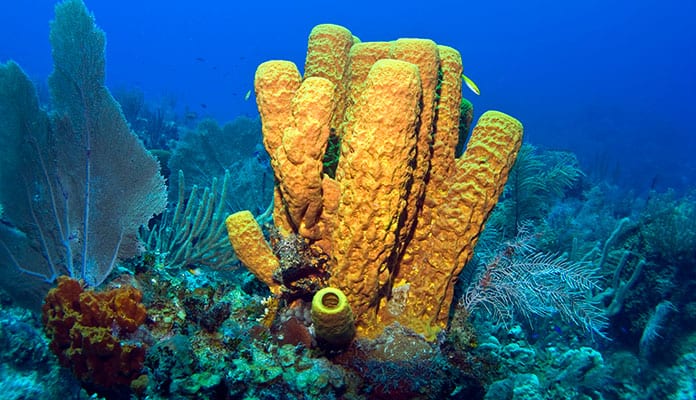 Also known as Tubastraea this type of coral will be easy to identify. Large in size this type of coral is often found in tropical locations in a series of colors. Incredibly versatile this type of coral has a number of subspecies that vary in color and size.
Also known as Tubastraea this type of coral will be easy to identify. Large in size this type of coral is often found in tropical locations in a series of colors. Incredibly versatile this type of coral has a number of subspecies that vary in color and size.
8. Elkhorn Coral
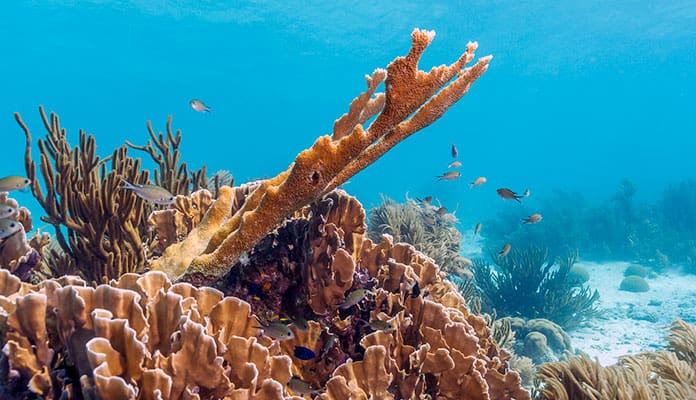 For those that frequent the tropical Caribbean waters, you will likely come across Acropora Palmata, also known as Elkhorn coral. These delicate corals have the incredibly important job of being one of the keystones in a reef. Coral reefs tend to flourish in areas with Elkhorn corals as they home many reef fish, parrot fish, snappers and even lobsters. This fast growing coral is essential to a flourishing tropical reef.
For those that frequent the tropical Caribbean waters, you will likely come across Acropora Palmata, also known as Elkhorn coral. These delicate corals have the incredibly important job of being one of the keystones in a reef. Coral reefs tend to flourish in areas with Elkhorn corals as they home many reef fish, parrot fish, snappers and even lobsters. This fast growing coral is essential to a flourishing tropical reef.
Globo Surf Overview
You will run into hard coral throughout your snorkeling and scuba diving days. Being able to identify the different types can help you to know where the elusive fish species are hiding. Having the extra knowledge will also help you navigate your way through the water without having to surface to find your bearings.

